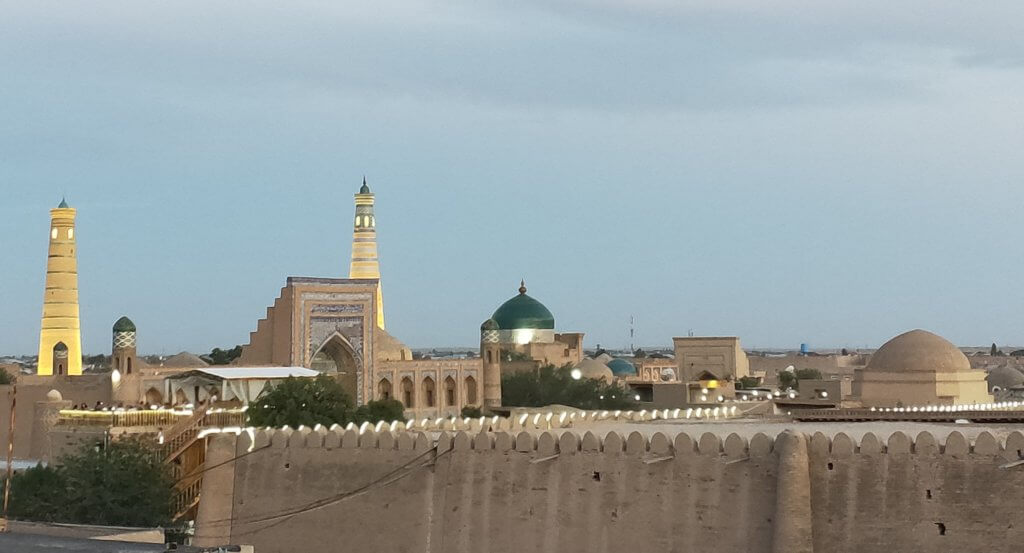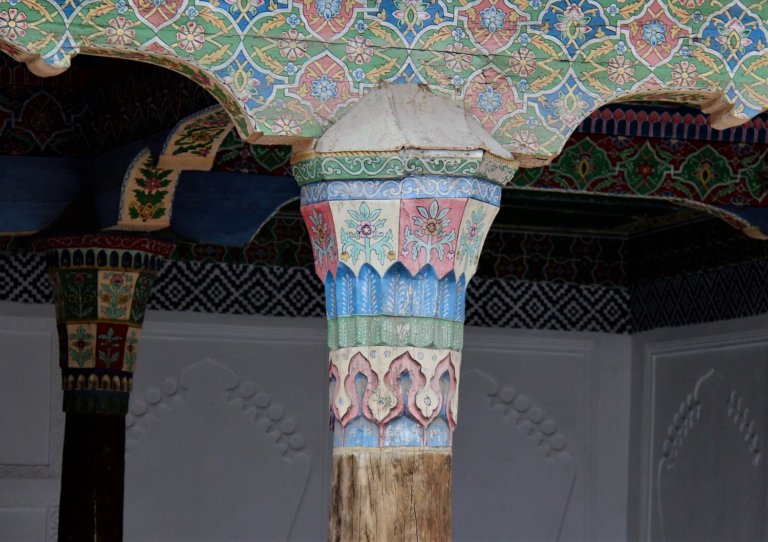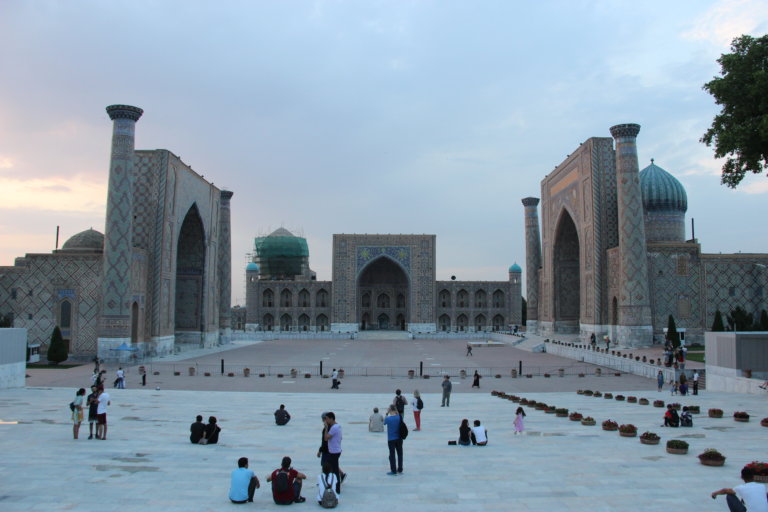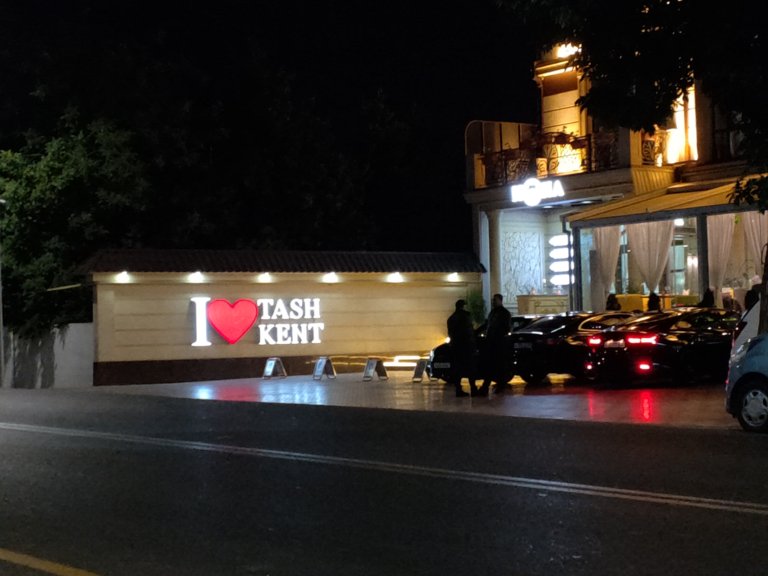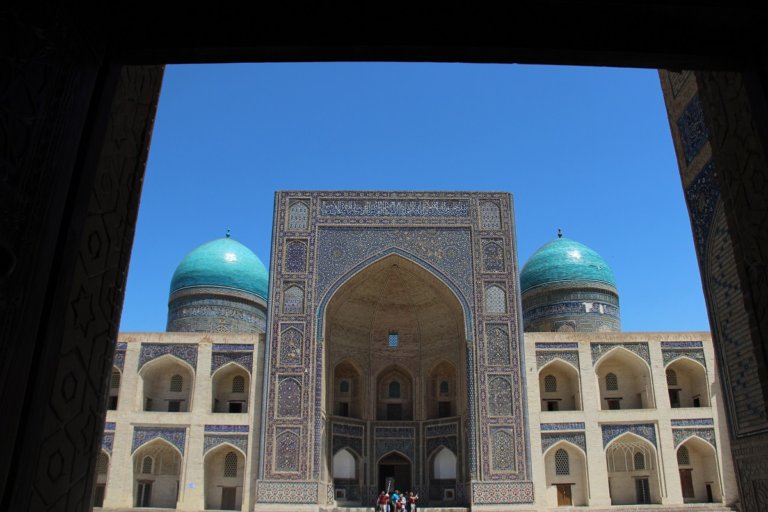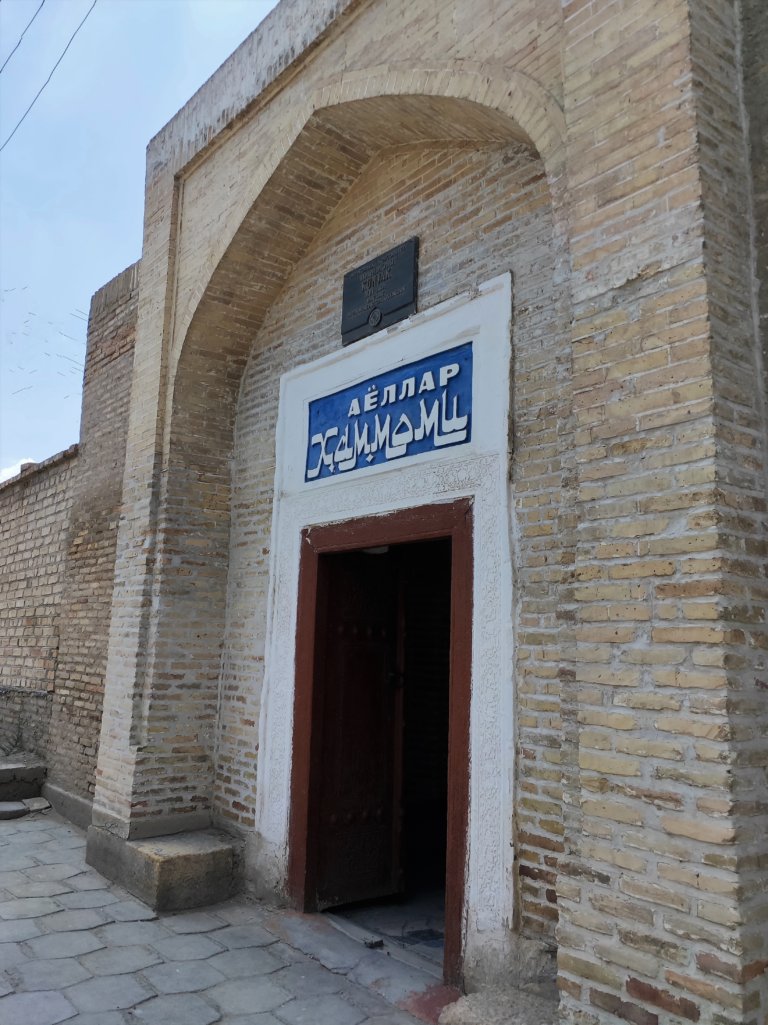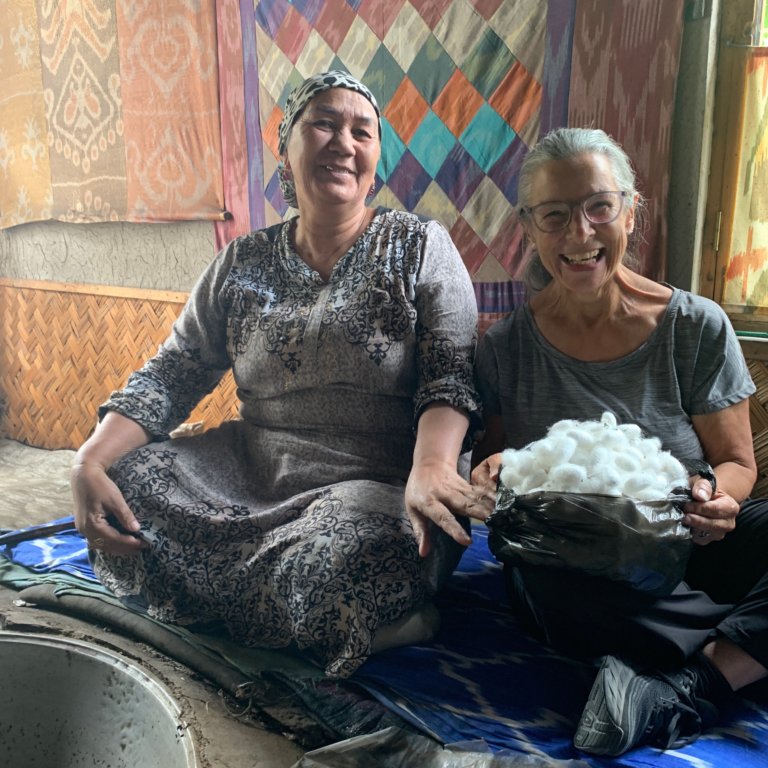Khiva, Uzbekistan. Day 41 June 9th 2019
Despite a brain curdling amount of information crammed into the newly synapsed Silk Road lobes of our brain, we decide to have another go today. In a swathe of great and information-laden guides across the Silk Roads, we add Iness to our list. Iness had a knowledge of history, people and of the region that was astounding. By the end of the day we were brain numb and very appreciative of the extra knowledge.

Painting depicting Ancient Khiva in Fine Arts Museum, Khiva
As we begin our cerebral day it seems incongruous, and a bit of fun, that the Strongmen of the World – here for the Pahlavon Mahmud Games – are on the outskirts of the city, outside the city walls – pulling a train! While thousands of years ago caravans of people, goods, and camels arrived in this ancient city.

The city is surrounded by a wall – an outer and inner-city wall, Our history lesson begins at the West Gate passing through the wall. The city wall has largely been reconstructed and the original wall covered for protection. Pieces of the wall dating back to the 5th century BC remain.
As contrast to the Strongmen yesterday – today a group of financiers surround us. They are also beginning a tour. Incongruously it is not camels, or horses but a slew of black shiny cars that briefly fills the ancient entrance expelling the new traders. As we relax into our tour they set off at an intense pace on their own journey.

We learn from Iness that Khiva was not the ancient name, but a Russian name, albeit derived from the original name Heyvak – meaning Pure Water. Khiva was invaded by Russia in 1873. The original name dates back to an early legend that Noah’s son found water here and settled with his people 2,500 years ago. What is known is that the water table is close to the surface here – approximately 10metres under ground.
And so began our tour of learning. So much to cram. What follows is a tiny bit of what we saw and learned:
The tour focussed on the Ichan-Kala – inner city protected by Unesco World Heritage. The city is home to about 2,000 people – old families of Khiva. The largest population inside the walls are us – the tourists (mostly Uzbek visitors). Most locals live outside the walls in the new Khiva city.

Entering the West Gate on the right is the expansive ancient Muhammad Amin-Khan madrasah, now a hotel. The entrance, internal domes and arches are covered with intricately carved plaster.
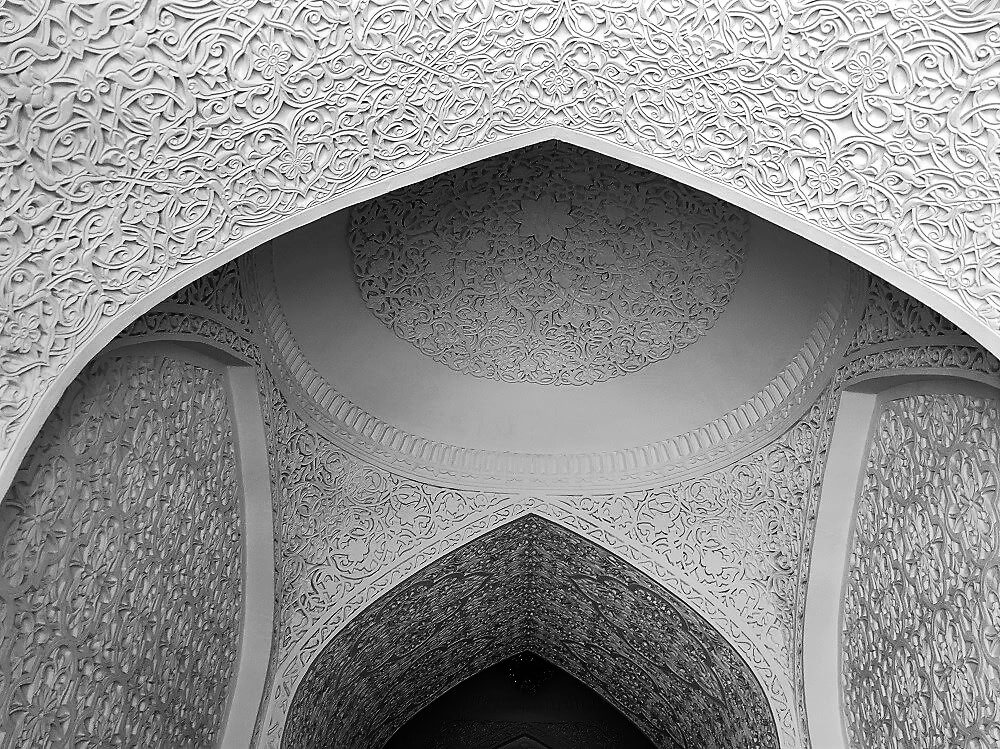
The large unfinished minaret nearby was also built by Amin-Khan designed to be the tallest in the world however he was killed before it was finished. It remains today a large, unfinished minora. The Madrasah was also built to be the largest in Khiva. A broad range of academic subjects taught with a focus on mathematics.
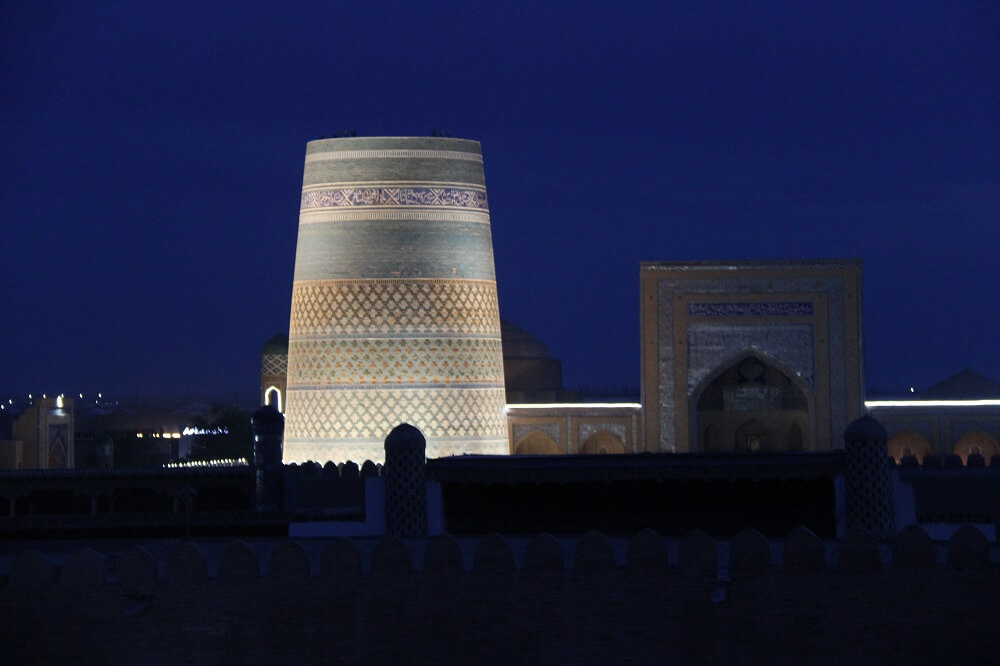
In 1511 Khiva became capital of the ancient region of Khorezm – the suffix meaning land, the prefix meaning either Fire, or Sun. Land of the fire (sun) worshippers – most likely a reference to Zoroastrians. A fascination of mine – Zoriastrians – and the founder Zarasthuter who can argue with a religion with a simple strong message – Good Thoughts – Good Words – Good Deeds. Yet history records the development of the religious and the political each benefiting and developing each other.
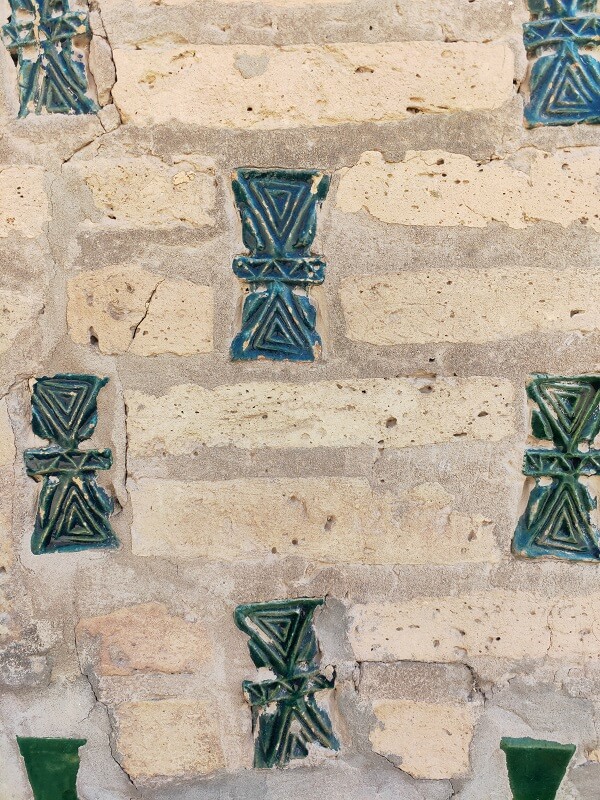
I overheard a guide describe to a group “As the city grows the intellectual life grows.” Once the early development and infrastructure of Khiva developed, along with population growth reaching a sustainable point, Khiva then became an academic and educational centre with a long history of intellectualism. This was a product of trading along the Silk Roads – trading of ideas along with goods and food and unfortunately the very lucrative slave trade through Khiva and along the Silk Roads.
At its peak the city was known to have 69 Madrassahs with at least 20 remaining in various forms today. One Madrasah that boasts the only one to have a lecturers balcony where lecturers could speak to students gathered in the courtyard below.
Many well known early intellectuals came from Khiva and the Khorezm region. One such figure was an 8th century mathematician Mohammed Muso al Khorezm. A man credited with the development of modern mathematics. In particular he founded the base for algebra – the name derived from his. He also developed the early mathematical foundations of what we now know as algorithm – thought to be an interpretation of his name.
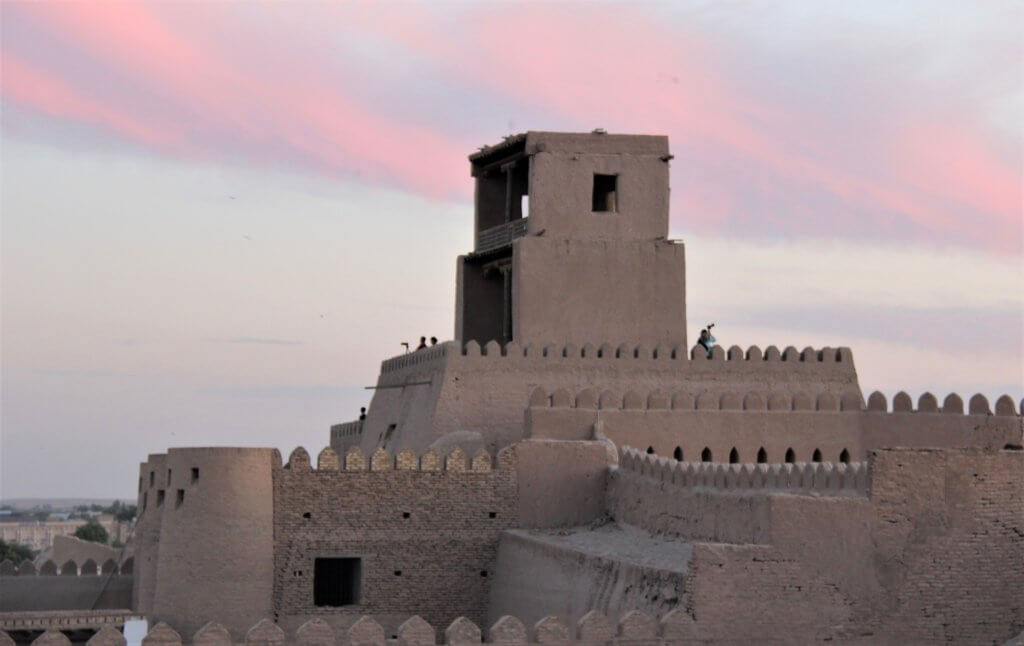
Kukhna Ark – citadel – The Ark was constructed by Arang Khan beginning in 1686. A high walled citadel within the city walls separating the Ark from the village. A seeming labyrinth of rooms and yards, many built with high ceilings to allow cool air to circulate. Akshikh bobo “watch tower” forms almost part of the city wall. Over centuries other rooms and functions have been added.
Decorated with tiles by Tile designer Abdullah Jin who created decoration specific to Khiva. Swirling circles and tiny repeating floral patterns. The blue and turquoise of the tiles enhanced by the highly coloured and highly decorative ceilings supported by carved wooden pillars.

Tile colours in the buildings in Khiva were often blues and aqua – without the reds and yellows of other cities. The single firing temperature (suiting blues and greens) and methods for producing the colours were different from Samarkand and Bukhara.
The palace within the citadel included many rooms including the Kings quarters; a reeception that had several areas and entrance doors according to the status of the visitor.
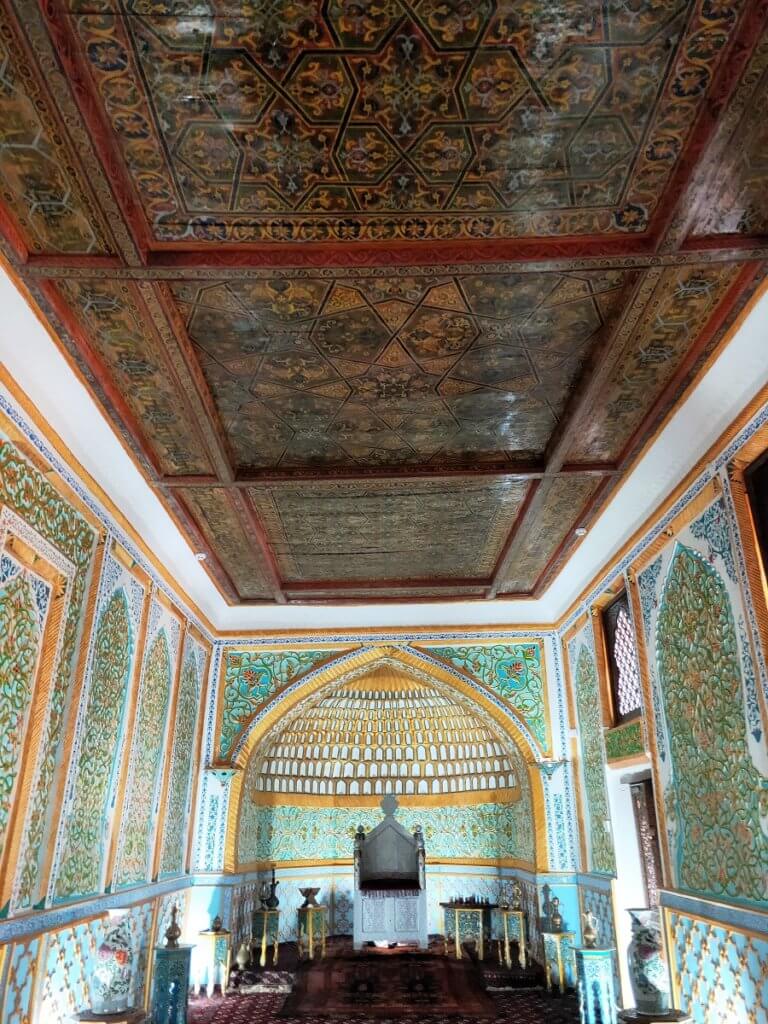
The reception room is elaborately painted and decorated with a throne in the niche at one end. Gold etches the outline of the highly painted and carved plaster walls. The ceiling painted and patterned in rich deep colours. A replica of the original throne is in place – the original was taken to Moscow during the Soviet era.
After the afternoon learning more about this wonderful city – SEE HERE it was time for a quick visit to check on the Strongman efforts. Cheering on the Aussie and everyone else who held up the columns – including the Russian who entertained the crowd with humour and smiles as he held the chains.

Finally a perfect evening for dinner on the rooftop – as the sunset and lights came on around the little city. Our table was laid and food brought up. Local “green” dill noodles with local beer alongside. Delicious.
